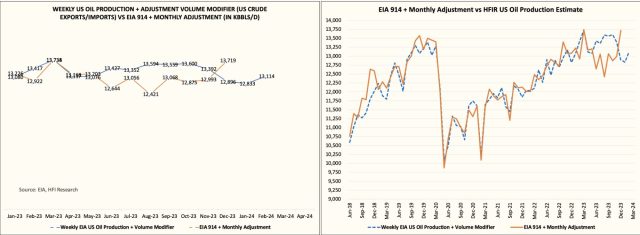The December edition of the EIA Petroleum Supplies Monthly (PSM) shows a record high in “crude oil supply,” which begs doubts regarding its authenticity. Adjustments and transfers are the cause of the disparity, which is estimated to be 14.193 million b/d. December shows an unanticipated surge of +404k b/d.

Contradicting figures in weekly EIA oil storage reports add to the confusion, suggesting potential inaccuracies in variables like imports, exports, and refinery throughput. The underlying reasons for the disparities in crude exports and transfers to the crude oil supply underscore the necessity of enhancing data transparency.
Technical and Fundamental Effects
The discrepancy in oil production figures impacts market sentiment, as traders grapple with uncertainties in supply dynamics. Technical indicators such as storage levels and production matrices provide additional insights into market fundamentals.
In essence, the disparity highlights how crucial precise data is to making well-informed decisions in the oil market. Inaccuracies in presented data may cause supply-demand dynamics to be misinterpreted, which may have an impact on trading tactics.
Market Outlook
Looking ahead, the introduction of EIA’s phase 3 data promises greater clarity, with enhanced methodologies aiming to differentiate between condensate and crude oil production. Analysts anticipate the January report to correct December’s anomaly, providing a more accurate presentation of U.S. oil production.
Although there are some short-term risks, the market picture is still cautiously positive. According to real-time production estimates, U.S. oil output was stable in February, coming in at about 13.1 million b/d. The upcoming reports from the EIA will provide insightful information to help market participants navigate changing supply dynamics.